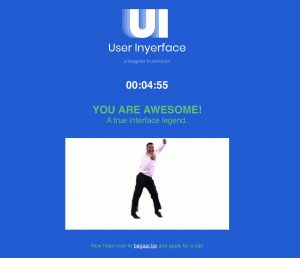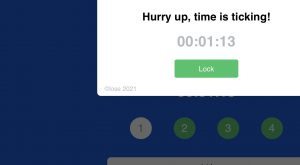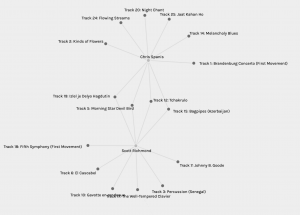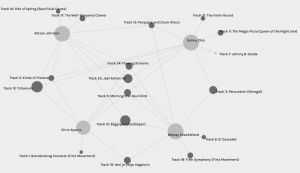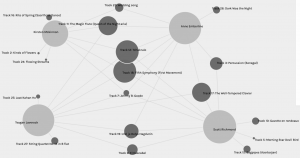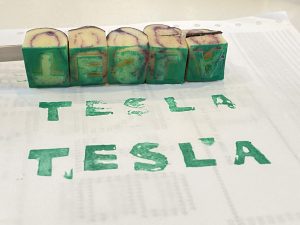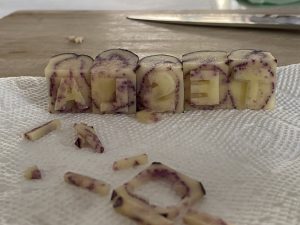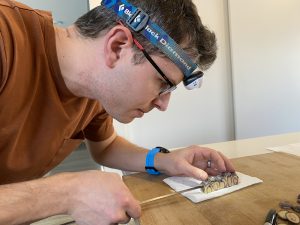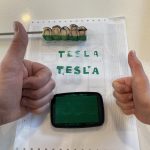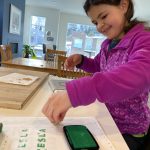First Narrative – Near future – 2035 – two class society – not necessarily rich & poor, but those who can self-regulate and those who can’t; those who are not addicted to their personal devices and those who are; those who create and those who consume.
I consider myself one of the lucky ones, but my father tells me I’m not lucky – it was hard work; an investment in energy and teaching. He tells me that he and my mother intentionally got me to where I am. They told me stories of discs that arrived in the mail that would grant access to the internet through wires before wireless phones. I have vague memories of childhood when they would let us watch videos and then cut us off when they thought we’d had enough and we would kick and scream. We were in the minority of teens who weren’t allowed to have smartphones. In hindsight I’m glad they did.
My name is Lexie and I’m 23 years old. I had barely finished my bachelor’s degree when I was tapped to work at an engineering and software design firm for Inter-Aries – the company that transports people to the Mars colonies (a spinoff of SpaceX). I always dreamed of becoming an astronaut and I love my job. It’s really exciting and not that difficult to be honest. I’d almost say going home from work is harder. A few of my friends from high school are doing ok – the ones that stayed with it and got jobs in design and programming. I think I know a couple that played esports for team Canada at the olympics. But most of the kids barely finished high school or didn’t. My dad calls them zombies. I’m grateful that most services are automated these days, frankly, because the “zombies” just don’t want to work. I remember going to buy shoes and lunch at the mall (oh my gosh remember malls?) and the employees couldn’t look up from their phones to help us or take our order. My dad says it was like that when the first iPhones came out, but it got so much worse.
At Inter-Aries we have trouble finding good people to do some of the non-automated jobs. We just fired our fifth person in a month. One didn’t show up for work after lunch and we found him in the break room gaming. Another just didn’t show up. She says she didn’t feel like working but forgot to quit or couldn’t get around to it. Professor Hurari called it the new opioid crisis. In the 2020’s when I was a kid, everyone was worried about their private data being stolen (or given away), but nobody thought the attention economy would turn more than three quarters of the population into addicts. I can’t believe some people still think it’s not a big deal. I heard a few days ago an 80 year old woman had a stroke and died while her husband was sitting next to her on the couch, staring at his phone. He didn’t notice she was dead until the next day. I sometimes catch myself thinking awful thoughts, that my friends, colleagues, and I are better than those “lowlifes,” but that’s not fair… Anyway, I have to get back to work. We’re training a new algorithm and testing it on the “trolley problem.” TTYL.
*****
Second Narrative – A teacher teaches a lesson to kids in 2051.
“Hunter.”
“Fuck you.”
“Excuse me?”
“What? Oh, no I wasn’t talking to you Mr. S… Some asshole shot me.”
“Hunter! Drop out of whatever game you’re playing, turn off your implant, and pay attention!”
Hunter exhaled loudly and turned his eyes from blankly staring at the wall towards his teacher and blinked a few times, looking bleary. At the front of the room, Mr. Spanis stood looking disappointed but not surprised at the teenager.
“Hunter, you know you’re not supposed to be using your implant during class time.”
“But Mr. S, I didn’t get to finish my game at break and Eri just beat my high score.”
“You wouldn’t have gotten a notification if your chip was turned off.”
“This shit is boring and when are we going to use it anyway?! I don’t see why we even have to be at this stupid school. My dad says no one needs to work anymore.”
The teacher rolled his eyes and took a breath. This year was his final year of teaching before retirement, and he’d heard this complaint before.
“Good point, Hunter” he began. “You might not work. Some of you might pursue creative design and programming jobs, some of you will do gig work for simple labour that robots can’t do, and the rest of you might very well just consume content and collect UBI.” He looked around the room as he spoke, trying not to look at which students he thought were the better ones as he listed the categories. He turned his gaze back to Hunter. “But remember, school isn’t training for a job; it’s stuff you ought to know as a person in the world. And the law says you can’t start collecting your Universal Basic Income until you get your high school diploma, unless you want to do monthly drug tests.
“Eww!” some of the students exclaimed. Mr. Spanis gestured with his hands that the students should quiet down.
“Now. This is your last class to finish your assignments on writing technology, from oral traditions to Gutenberg, computers, and neural links. Remember you can handwrite or type but no neural links allowed. Got that Hunter?”
Later that day, Mr. Spanis, Chris, left the school and walked to his car. He got in as a familiar tone sounded. He nodded to confirm that the default destination, home, was where he intended to go. The car pulled out of it’s spot and rolled onto the street, noiseless but for the crackle of traces of sand under the tires. He read over the day’s news headlines as the car turned itself onto the highway, and he smiled when he saw an article on another successful landing at the Mars colony. His daughter, Lexie, was chief engineer at the company that designed the spacecraft. A tone sounded, interrupting his article and video with a popup video from the camera at his home’s front door.
“Hello Mr. Spanis,” the voice said. “Are you home to receive a package?”
“Hi, I’m on my way. Be there in 5 minutes. Just leave it on the step, please and thank you.”
“I’m afraid as this is wine, category, alcohol and other controlled substances, I cannot. Would you like me to try again later?”
“No, no. I’ll remote-open the door. Can you drop it inside?”
“Yes sir,” the voice pleasantly replied. Chris reached over to the display and tapped it. A tone confirmed the front door opened and the delivery bot lowered the case of wine into the front entryway. He chuckled and thought to himself “for a so-called automated world I still have to intervene a lot for simple, dumb shit…” He felt a sudden warmth followed by happiness. His wife Jennifer had sent a stim message, a token of affection like x’s and o’s at the end of a letter or a text message emoji, but sent wirelessly without words or images as a delivery of pure emotion directly to his neural implant. He smiled and sent back with a thought, “you too hon. See you in a few minutes.”
